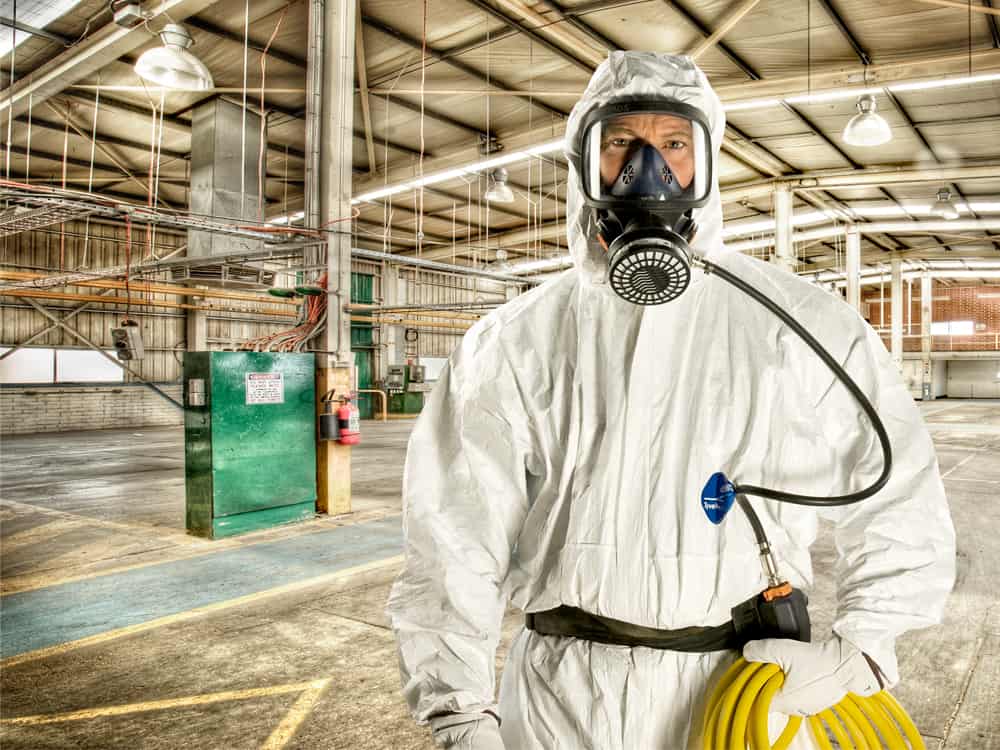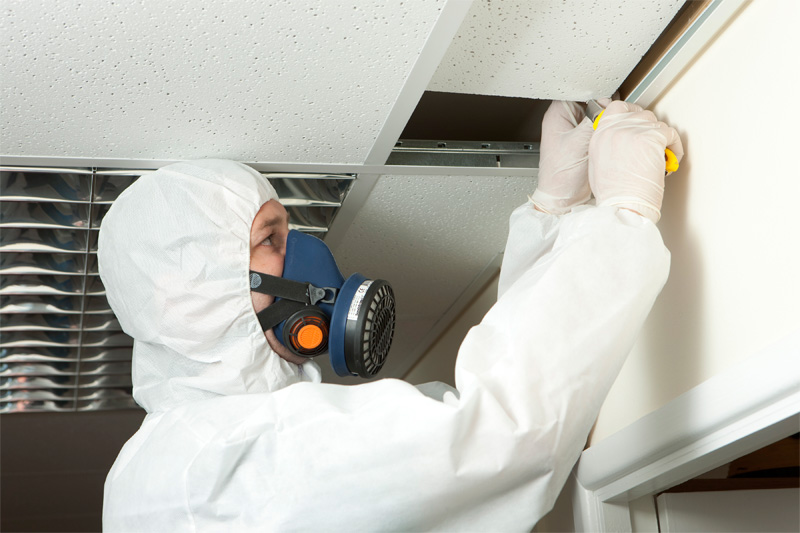Top-Rated Asbestos Testing: Shield Your Household from Harmful Direct Exposure
Top-Rated Asbestos Testing: Shield Your Household from Harmful Direct Exposure
Blog Article
The Total Process of Accredited Asbestos Examining to Make Sure Residential Property Compliance
In the world of home administration and compliance, the process of certified asbestos screening stands as a critical component to guarantee the security and health of residents. From the initial assessment to the last interpretation of results, each stage plays an important function in figuring out the visibility of asbestos within a property.
Accredited Asbestos Testing: Initial Assessment
In conducting the first analysis for approved asbestos screening, a thorough exam of the property's materials is important to precisely determine potential asbestos-containing products. This important step includes visually evaluating all areas of the residential or commercial property, consisting of ceilings, walls, flooring, insulation, and other structure materials that might harbor asbestos. Unique attention is offered to materials that are prone to harm or disruption, as these circumstances can release hazardous asbestos fibers right into the air. Furthermore, tasting of presumed materials might be needed to validate the visibility of asbestos with lab analysis.
Certified asbestos assessors adhere to stringent methods set by regulatory bodies to make sure the accuracy and integrity of the testing procedure. By meticulously recording findings and using advanced screening methods, assessors can give residential property owners with a thorough report outlining the visibility of asbestos, if any type of, and the advised steps for reduction or elimination. This initial evaluation establishes the foundation for succeeding activities to deal with asbestos problems and guarantee the security and conformity of the home.
Example Collection Treatments for Asbestos Evaluating
Reliable example collection procedures are vital in making certain accurate asbestos testing results and compliance with regulatory requirements. When gathering examples for asbestos screening, it is critical to adhere to strict protocols to minimize the risk of contamination and guarantee the dependability of the results.
First of all, it is necessary to determine the presumed asbestos-containing products (ACMs) and prioritize sampling areas based on factors such as the material's condition, accessibility, and potential for disruption. Asbestos Testing. Examples need to be accumulated from numerous places within the residential property to supply a detailed evaluation of asbestos existence
During sample collection, licensed specialists must use suitable individual protective tools (PPE) to protect versus asbestos direct exposure. They have to utilize clean tools, such as non reusable handwear covers and plastic sheeting, to stop cross-contamination in between examples. Samples should be meticulously gathered utilizing a specified strategy, such as wet wiping or coring, and firmly sealed in closed containers to maintain their integrity during transport to the laboratory for analysis.
Lab Evaluation Process for Asbestos Samples
Upon conclusion of the sample collection process, the asbestos samples are carefully transferred to recognized labs for careful analysis. The very first step in the research laboratory evaluation process is sample preparation, where the collected examples are very carefully refined to my response remove the asbestos fibers.

Once the analysis is full, a thorough record is produced, describing the findings and verifying whether asbestos page is existing, the sort of asbestos fibers identified, and the concentration levels. This info is vital for homeowner to take the necessary steps to guarantee compliance with asbestos regulations and safeguard the health of passengers.

Coverage and Analysis of Asbestos Test Results
Approved asbestos screening laboratories provide thorough reports that provide crucial understandings into the presence, type, and concentration levels of asbestos fibers found in samples accumulated from properties. These reports are vital for homeowner and managers to recognize the danger posed by asbestos and make informed choices concerning its management or removal. The records typically include info on the methods utilized for screening, the locations where examples were taken, the kind of asbestos determined (such as chrysotile, amosite, or crocidolite), and the focus levels of asbestos fibers found.
Translating these outcomes calls for proficiency to evaluate the visit this site right here potential health threats connected with asbestos exposure, figure out the proper program of action, and make certain regulative conformity (Asbestos Testing). Depending on the findings, suggestions might vary from continued surveillance and upkeep to encapsulation or complete asbestos reduction. Homeowner ought to thoroughly review these reports and seek advice from asbestos specialists to develop a comprehensive plan for attending to any kind of asbestos concerns recognized
Ensuring Home Conformity With Asbestos Rules
To preserve adherence with asbestos regulations, building owners have to diligently implement measures to ensure conformity with applicable legislations and standards. This includes carrying out regular asbestos evaluations by recognized professionals to determine any kind of presence of asbestos-containing materials within the residential or commercial property. When asbestos is identified, residential or commercial property owners have to follow asbestos administration prepares that outline appropriate control, removal, or encapsulation procedures to stop exposure and spread of asbestos fibers. Conformity likewise entails maintaining comprehensive records of asbestos screening, upkeep, and elimination tasks for inspection purposes.
Building proprietors need to give asbestos recognition training to staff members and owners to reduce the threat of asbestos exposure and guarantee correct handling of materials that may have asbestos. In addition, it is essential to remain educated regarding any type of updates or modifications in asbestos regulations to readjust management practices as necessary. By proactively resolving asbestos conformity requirements, residential or commercial property proprietors can create a secure atmosphere for passengers and reduce potential lawful and health threats connected with asbestos exposure.
Conclusion
To conclude, recognized asbestos screening is an essential procedure for making certain residential or commercial property compliance with guidelines. The first analysis, example collection procedures, laboratory analysis, and interpretation of results are all crucial actions in this procedure. By adhering to these treatments, property owners can identify and deal with any type of asbestos dangers present, securing the health and safety and security of occupants and keeping conformity with regulative needs.
Report this page